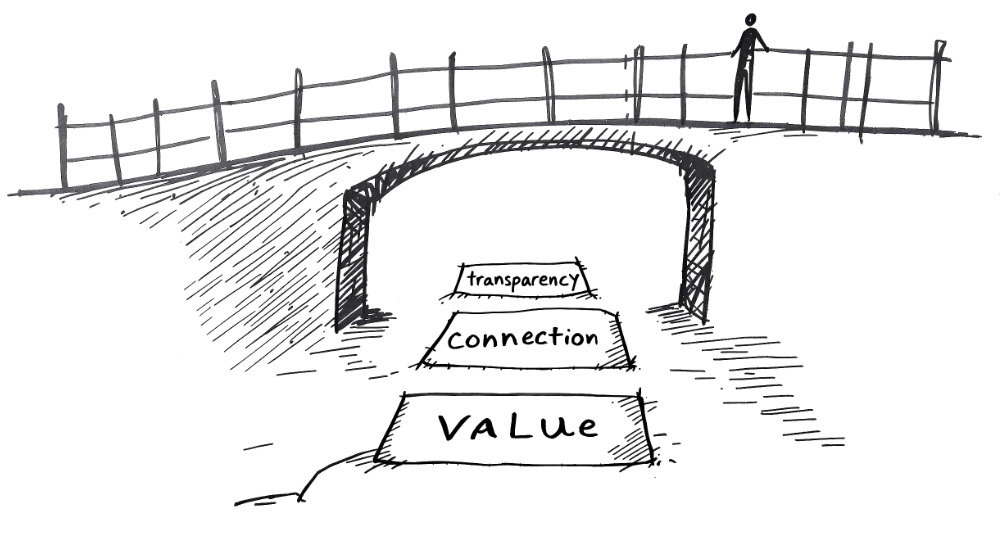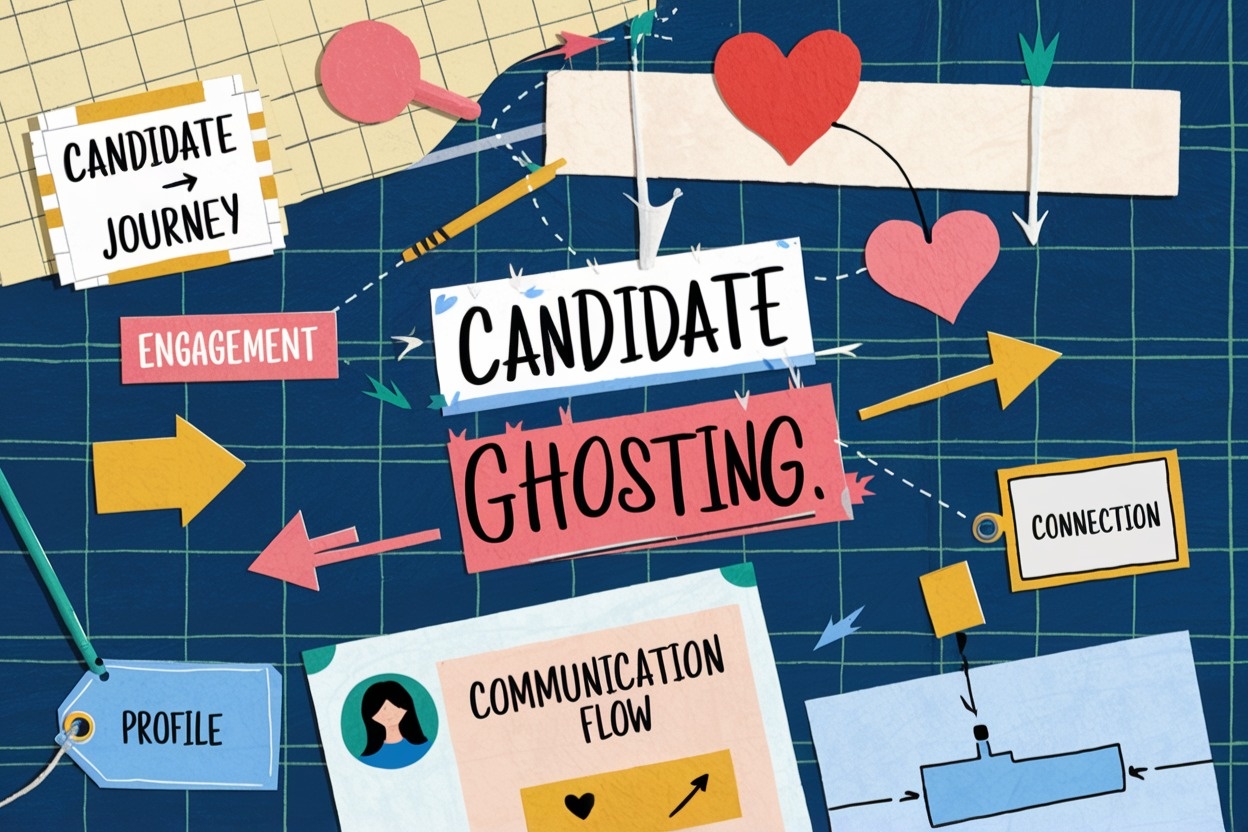You’ve been there: You find a candidate who seems perfect—great resume, solid skills, even a spark of personality in the initial chat. You send a follow-up email, schedule an interview, and then… silence. No response, no warning, just a digital vanishing act. It’s called candidate ghosting, and it’s the recruitment equivalent of being stood up on a first date after you’ve already picked out the restaurant.
Ghosting isn’t just annoying—it’s a symptom of a deeper disconnect in the hiring process. In today’s candidate-driven market, where top talent has options galore, keeping them engaged requires more than a generic “We’ll be in touch” email. Let’s decode why candidates disappear and explore practical ways to keep them hooked from first contact to offer letter.

Why Candidates Ghost (Spoiler: It’s Not Always You)
Before you take it personally, let’s break down the reasons candidates vanish. It’s not always about your company’s mismatched office chairs or that slightly awkward phone screen. Here’s what’s really going on:
- Overwhelm from Options: Candidates are juggling multiple applications—sometimes 10 or more at once. If your process feels slow or unclear, they’ll prioritize elsewhere.
- Lack of Connection: If your outreach feels robotic or transactional, they won’t feel invested enough to stick around.
- Better Offers: A competitor swoops in with a faster timeline or shinier perks, and poof—they’re gone.
- Life Happens: Personal emergencies, second thoughts, or a sudden “I’m staying put” decision can derail their interest without warning.
- Process Fatigue: Endless rounds of interviews, assessments, or vague timelines can make even the keenest candidate bail.
I once had a recruiter friend lament losing a stellar developer after three rounds of interviews stretched over six weeks. Turns out, the candidate took a job elsewhere that wrapped up hiring in half the time. Lesson? Speed and clarity matter.
The Engagement Equation
So how do you stop candidates from fading into the ether? It’s less about chasing them down and more about creating a process that’s sticky—think Velcro, not flypaper. Here’s the playbook:
1. Start with Transparency
Be upfront about your timeline, process, and expectations. A simple “Here’s what to expect: 3 interviews over 2 weeks, decision by Friday” can reduce anxiety and keep them in the loop.
2. Make It Personal
Ditch the canned emails. Mention something specific—like “I loved your portfolio piece on X” or “Your experience with Y caught my eye.” Personalization shows you’re paying attention, not just fishing.

3. Keep the Momentum Going
Long gaps between touchpoints are ghosting fuel. Check in every few days, even if it’s just a quick “We’re reviewing your assessment—expect feedback by Wednesday.” Momentum builds trust.
4. Offer Value Early
Share a relevant industry article, invite them to a casual webinar, or give a peek into your team’s culture. It’s not about selling the job—it’s about showing you’re invested in their growth, whether they join or not.
5. Streamline the Process
If your hiring takes five rounds and a carrier pigeon delivery, you’re asking for drop-offs. Aim for efficiency: consolidate interviews, minimize redundancy, and respect their time.
The Timing Tightrope
Timing is everything—but it’s a balancing act. Move too fast, and you risk seeming desperate or skipping due diligence. Too slow, and they’re already signing someone else’s offer. Here’s a rough guide:
- First Response: Within 24-48 hours of applying.
- Interview Scheduling: Within 3-5 days of initial contact.
- Feedback Post-Interview: Within 2-3 days, even if it’s “We’re still deciding.”
A recruiter I know once turned a near-ghost into a hire by sending a same-day “Great chat—here’s the next step” message after an interview. The candidate later admitted they’d been about to accept another offer but felt valued by the quick follow-up.
Tech to the Rescue (But Not a Replacement)
Technology can help you stay on top of engagement without breaking a sweat. Use your ATS to:
- Automate personalized follow-ups (e.g., “Hi [Name], loved your take on X…”).
- Track where candidates drop off in the pipeline.
- Set reminders for timely check-ins.
But don’t let automation strip out the human touch. A chatbot saying “You’re awesome!” won’t cut it if it feels like spam.
At Machine Hiring, we get it—keeping candidates engaged shouldn’t feel like herding cats. Our platform helps you automate the busywork while keeping your process warm and human. Try it free for 30 days and see the difference.
When Ghosting Happens Anyway
Sometimes, despite your best efforts, candidates still vanish. Don’t despair—it’s not always a loss. Reach out with a low-pressure “Hey, noticed you’ve been super quiet—everything okay on your end?” Some will resurface, appreciative of the nudge. Others won’t, and that’s fine—it’s data for refining your approach.

The Bigger Picture
Preventing ghosting isn’t just about filling roles—it’s about building a reputation. Candidates talk. A process that respects their time and keeps them engaged—even if they don’t join—turns them into advocates. That “almost hire” might refer a friend or boomerang back when the timing’s right.
Final Thoughts
Candidate ghosting stings, but it’s not a mystery novel—it’s a puzzle with solvable pieces. By blending transparency, personalization, and a dash of hustle, you can turn flaky prospects into committed hires. It’s not about begging them to stay; it’s about making them want to.
Ready to banish ghosting from your recruitment game? Start your free trial with Machine Hiring and build a process candidates can’t resist sticking around for.
Related Posts
- From Passive to Active: Nurturing Candidates Over the Long Haul
- Ghostbusting in Recruitment: How to Keep Candidates Engaged
- Stop Chasing Unicorns: How to Finally Improve Candidate Quality Metrics (and Actually Enjoy Hiring)
- Transform Your Candidate Experience: A Modern Recruiter’s Guide
- Why Candidate-Centric Recruitment Is Your Secret Weapon (And How to Get It Right)


